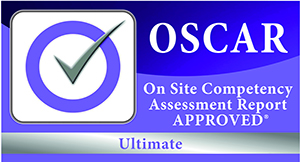NVQ LEVEL 2 IN CAVITY WALL SURVEYING &/OR INSPECTION OCCUPATIONS
REFERENCE CODE
603/4678/4
COURSE LEVEL
NVQ Level 2
THIS COURSE IS AVAILABLE IN

Course Overview
This is a work-based learning qualification for those involved in cavity wall surveys/inspections and/or clearance. The qualification has been developed at the request of and in partnership with OSCAR OSNITE https://oscaronsite.co.uk
The OSCAR and this qualification are recognised by a number of UKAS Certification bodies, industry bodies, Local Authorities and industry stakeholders.
Prior to registering on this qualification, individuals must be registered with OSCAR.
The clearance pathway enables individuals to carry out the extraction of cavity wall insulation to create a clear cavity that can be reinsulated or insulated if the system has been used to remove debris only. Candidates must also prove knowledge and competence to create a clear cavity to be able to facilitate External Rendering and External Wall Insulation complying with current Building Regulations.
All work must be completed following safe working practices, relevant legislation, and comply with contract information and the allocated timescales.
The surveyor/inspection pathway requires candidates to demonstrate the skills and knowledge required to interpret information to be able to carry out a Cavity Clearance survey in accordance with the job specifications, following safe working practices and within the allocated time. The Surveyor must also understand how to communicate with others to ensure work is carried out effectively. This pathway includes identifying and selecting the correct quality of equipment, additionally candidates must understand how to calculate quantity, area and wastage.
To achieve this pathway unit the survey work must be carried out in ways that will minimise the risk of damage to the work and surrounding area and using and maintaining equipment effectively. This qualification is made up of 3 mandatory units and 2 pathways.
Candidates must complete the mandatory units and one or both of the pathways. The minimum credit value of this qualification is 24 credits.
There is also an entirely optional additional unit, if achieved this will appear on the qualification certificate but does not count towards the minimum credit value of the qualification.
Qualifications are now required to indicate the total qualification time (TQT), this is to show the typical time it will take someone to attain the required skills and knowledge to meet the qualification criteria, this qualification has a TQT of 240 hours. Qualifications are also required to indicate the number of hours of teaching someone would normally need to gain the skills and knowledge to achieve the qualification. These are referred to as Guided Learning Hours (GLH). The GLH for this qualification is 84.
Mandatory Units Level Credit
Conforming to General Health, Safety and Welfare in the Workplace
Conforming to Productive Working Practices in the Workplace
Handling and Storing Resources in the Workplace 2 5
Pathway 1 Cavity Wall Clearance
Cavity wall clearance in the workplace
CWC1
Pathway 2 – Cavity Extraction Specialist Surveyor/Inspector
Surveying/Inspection of Cavity wall clearance in the workplace
Summary of the: GQA NVQ LEVEL 2 CERTIFICATE IN CAVITY WALL EXTRACTION OCCUPATIONS
SICW1
Additional Unit
Erecting and Dismantling Access/Working Platforms in the Workplace
Achieving the combination of Mandatory units and the correct choice of Optional credits will mean the qualification has been completed and GQA will provide the qualification title. Where a candidate has completed additional credits, the qualification will list these as “additional credits”, in cases where the candidate has not completed the full qualification and will not go on to do so, a Certificate of credit can be issued for the credits achieved.
Assessment guidance:
Evidence should show that you can complete all of the learning outcomes for each unit being taken.
Types of evidence:
Evidence of performance and knowledge is required. Evidence of performance should be demonstrated by activities and outcomes, and should be generated in the workplace only, unless indicated under potential sources of evidence (see below). Evidence of knowledge can be demonstrated though performance or by responding to questions.
Quantity of evidence:
Evidence should show that you can meet the requirements of the units in a way that demonstrates that the standards can be achieved consistently over an appropriate period of time.
Potential sources of evidence:
The main source of evidence for each unit will be observation of the candidate’s performance and knowledge demonstrated during the completion of the unit. This can be supplemented by the following types of physical or documentary evidence:
- Accident book/reporting systems
- Photo/video evidence
- Safety records
- Work diaries
- Training records
- Timesheets
- Audio records
- Telephone Logs
- Job specifications and documentation
- Meeting records
- Delivery Records
- Records of toolbox talks
- Witness testimonies
- Equipment
- Correspondence with customers
- Prepared materials and sites
- Notes and memos
- Completed work
Please Note that photocopied or downloaded documents such as manufacturers or industry guidance, H&S policies, Risk Assessments etc, are not normally acceptable evidence for GQA qualifications unless accompanied by a record of a professional discussion or Assessor statement confirming candidate knowledge of the subject. If you are in any doubt about the validity of evidence, please contact Oscar Onsite Academy
Apply Now
Sound like the Apprenticeship for you? Why not fill in our online application form and we can start searching for your perfect Apprenticeship vacancy
Apply Now

